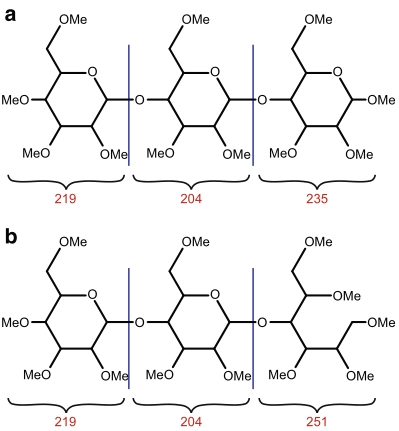Oligosaccharide Chain Analysis
More than half of commercial protein drugs are glycoproteins, which is not surprising considering that most proteins in living organisms are equipped with glycans. The type and structure of oligosaccharide chains impact the functioning of protein drugs directly or indirectly. Therefore, elucidation of oligosaccharide chain drugs is important to understand the structure-function relationship of specific glycoproteins. Creative Biolabs is a leading service provider that focuses on all kinds of glycoprotein studies. With years of experience in this area, we established a mature and comprehensive oligosaccharide chain analysis platform. Based on novel technologies including Lectin Microarray, MS, LC-ESI-MS, MALDI-TOF MS, HPLC, HPAEC-PAD, RP-HPLC, UHPLC/FLD/Q-TOF, FTIR, NMR, SPRi, TLC, Flow Cytometry, GC-MS, Imaging Mass Spectrometry, and Glycobiology Microarray, we can provide a series of inexpensive and rapid oligosaccharide chain analysis services to match your specific requirement in glycoprotein analysis.
 Fig.1 Schematic representation showing the masses of each
Fig.1 Schematic representation showing the masses of each
monosaccharide component on nonreduced permethylated glycan (a)
and reduced permethylated glycan(b).1, 2
Oligosaccharide Structure Analysis
To determine the structure of oligosaccharide chains, glycoproteins are degraded to fragments by protease and the oligosaccharide chains are subsequently released from peptides. The N-linked glycan on the majority of glycopeptides can be released enzymatically while O-linked glycan release is usually accomplished chemically because commercially available enzymes for the release of O-glycans have narrow site-specificity. Therefore, N- and O-linked glycan chains can be collected and purified separately and analyzed by MS or GC-MS. However, permethylation is one of the most common derivatization techniques for the mass spectrometric characterization of released N- and O-glycans. By replacing every hydroxyl proton with a methyl group, permethylated glycan fragments can make the analysis more sensitive and provide information about the sequence of monosaccharides and through which positions they are linked to each other in the glycan.
Linkage Analysis
The linkage of glycan chains can be determined by the analysis of permethylated glycans released from glycoproteins with GC-MS or HPLC-MS. The permethylated glycans are hydrolyzed with acid, which cleaves them into their constituent monosaccharides, and the previously linked oxygens are converted to hydroxyls, whereas the oxygens that were not involved in linkages remain methylated. Moreover, the linkages present in a glycan can also be determined by sequential removal of nonreducing end residues by means of digestion with linkage-specific exoglycosidases.
Glycosyl Composition Analysis
Different from the analysis of structure and linkage, glycosyl composition analysis requires quantitative determination of each monosaccharide type. The individual monosaccharides can be separated by various methods, including HPAEC-PAD, GC-MS, or LC-ESI-MS. In recent years, specific Lectin Microarray and Glycobiology Microarray technologies have developed rapidly and are widely applied in the quantification of glycans.
As the base of glycoprotein analysis, oligosaccharide chain analysis offers lots of information to clarity the whole structure of glycoproteins. Creative Biolabs provides rapid, inexpensive, and accurate oligosaccharide chain analysis services to meet every requirement from global clients. For more details, please feel free to contact us directly.
References
-
Shajahan, Asif, et al. "Glycomic and glycoproteomic analysis of glycoproteins—a tutorial." Analytical and bioanalytical chemistry 409 (2017): 4483-4505.
-
Under Open Access license CC BY 4.0, without modification.
For Research Use Only.
Resources

 Fig.1 Schematic representation showing the masses of each
Fig.1 Schematic representation showing the masses of each


